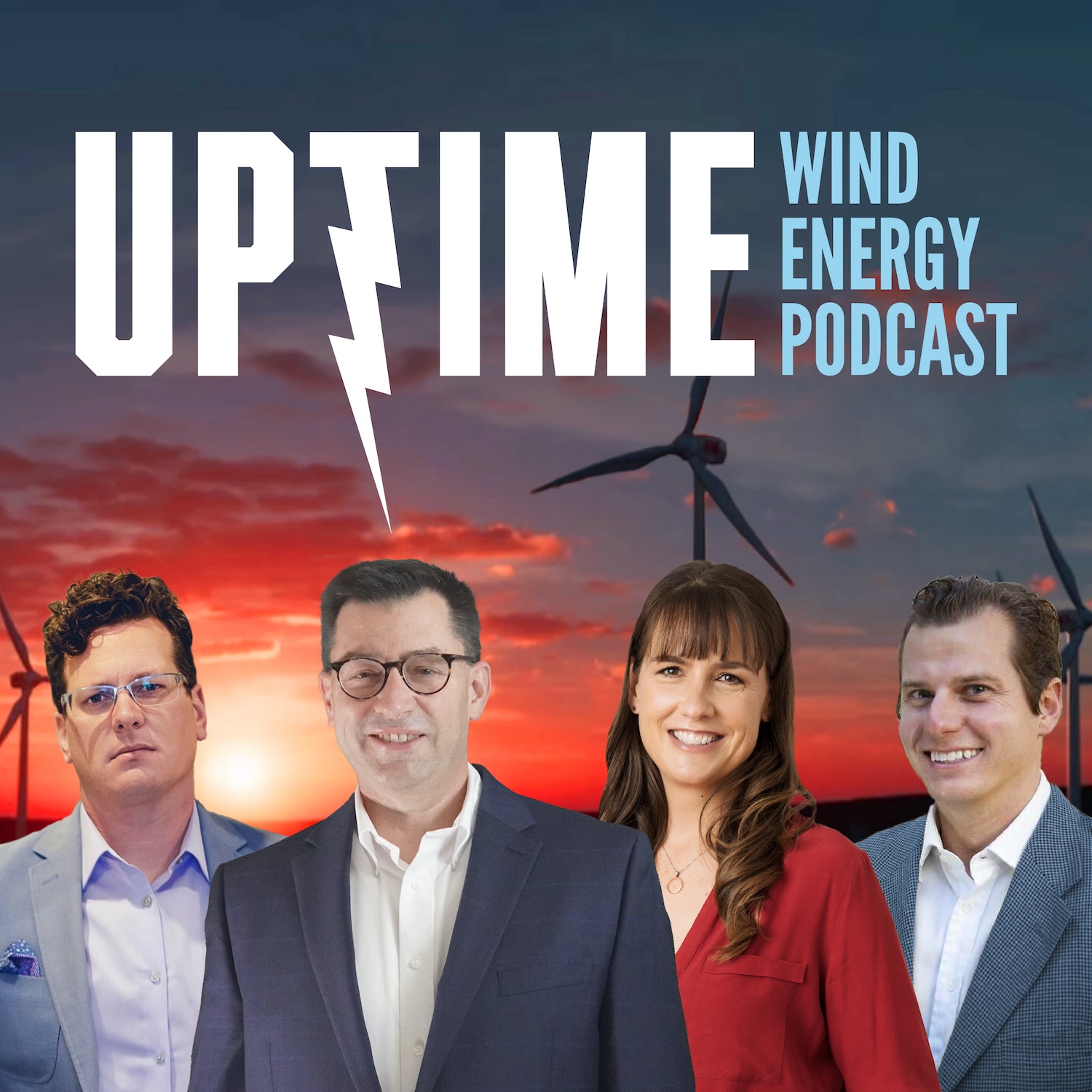Siemens Gamesa Blade Closeout Plates, Vestas & ZF Plastic Torque Tube
Description
This week on Power-Up, we discuss Siemens Gamesa's method for stabilizing wind turbine blades by installing closeout plates. Then Vestas and ZF's idea to replace the metal torque tube in the gearbox with a plastic piece, protecting from current. And finally, an Enercon patent for painting blades in an ombre pattern to lessen visual disturbances.
Sign up now for Uptime Tech News, our weekly email update on all things wind technology. This episode is sponsored by Weather Guard Lightning Tech. Learn more about Weather Guard's StrikeTape Wind Turbine LPS retrofit. Follow the show on Facebook, YouTube, Twitter, Linkedin and visit Weather Guard on the web. And subscribe to Rosemary Barnes' YouTube channel here. Have a question we can answer on the show? Email us!
Pardalote Consulting - https://www.pardaloteconsulting.comWeather Guard Lightning Tech - www.weatherguardwind.comIntelstor - https://www.intelstor.comWind Energy O&M Australia Conference - https://www.windaustralia.com
Allen Hall: Welcome to Power Up, the uptime podcast focused on the new, hot off the press technology that can change the world. Follow along with me, Allen Hall, and IntelStor's Phil Totaro, as we discuss the weird, the wild, and the game changing ideas that will charge your energy future.
All right guys, our first idea is what's turbine blades, and it's an idea from Siemens Gamesa, and it In patent form, as they describe it here, it's what they call a novel approach to stabilizing wind turbine blades without the need for traditional trailing edge beam designs. But what they're really doing is they're installing closeout plates on the, between the aft spar and the trailing edge.
So, This idea is pretty much making a wind turbine blade look a lot like an airplane wing, Phil.
Philip Totaro: Yeah, especially like an older style airplane wing. So those that aren't familiar with the closeout plate, it's like a rib design that has this, vertical element at different longitudinal locations throughout the Kind of the, the max cord section and in inner portion with the exception of like the, the immediate root section of the blade.
But it's, it's interesting to me, besides just the, the general concept here, the timing of this was fascinating to me because they filed for this patent back in April of 2024. And the patent has now published in October and the question Is, is this a potential fix to a problem?
Is this what's this really doing?
Allen Hall: Well, it's stopping torsion is what it's doing, Phil. It's preventing the blade from twisting too much, which makes me think of a couple of blades that I'm familiar with that have torsion problems. Joel?
Joel Saxum: Well, if you look at the image here, so I've crawled around in quite a few blades doing RCA's and failures, and you're always looking for failure modes,
More Episodes
Allen Hall and Joel Saxum talk with Cory Mittleider from Malloy Wind about the complex world of wind turbine main bearings. Cory breaks down why traditional bearing coatings are failing in newer turbine models and explores how electrical discharge, material choices, and monitoring systems play...
Published 11/21/24
Published 11/21/24
This week on Uptime Power-Up we discuss Vestas' offshore blade repair method, Siemens Gamesa's way of optimizing power production for floating turbines, and a fun way for kid's to collect their Halloween candy.
ign up now for Uptime Tech News, our weekly email update on all things wind...
Published 11/20/24


